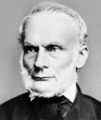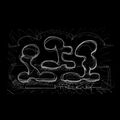Template:Selected anniversaries/August 24: Difference between revisions
No edit summary |
No edit summary |
||
| Line 101: | Line 101: | ||
||1971: Carl Blegen dies ... archaeologist who unearthed evidence that supported and dated the sack of Troy recorded in Homer's Iliad. Storage jars, skeletons and ash piles (which he interpreted as evidence of the city's fiery destruction) reinforced his conviction. He also discovered, in 1939, clay tablets dating from about 1250 BC. At the fabled palace of King Nestor, a major figure in the Trojan War, nearly 1,100 clay tablet records of palace transactions were found there over 15 years. These were inscribed with the earliest known examples of European writing, enabling cryptographers to find the key by which the ancient tablets could be decoded, proving the existence of a Greek civilization where none was formerly thought to exist. Pic. | ||1971: Carl Blegen dies ... archaeologist who unearthed evidence that supported and dated the sack of Troy recorded in Homer's Iliad. Storage jars, skeletons and ash piles (which he interpreted as evidence of the city's fiery destruction) reinforced his conviction. He also discovered, in 1939, clay tablets dating from about 1250 BC. At the fabled palace of King Nestor, a major figure in the Trojan War, nearly 1,100 clay tablet records of palace transactions were found there over 15 years. These were inscribed with the earliest known examples of European writing, enabling cryptographers to find the key by which the ancient tablets could be decoded, proving the existence of a Greek civilization where none was formerly thought to exist. Pic. | ||
||1974: Alexander P. de Seversky dies .. pilot and engineer, co-designed the Republic P-47 Thunderbolt. Pic (cool!). | |||
||1978: Dame Kathleen (Mary) Kenyon dies ... archaeologist whose work at Jericho identified it as the oldest known continuously occupied human settlement by excavating to its Stone Age foundation. This evidence pushed back the era of occupation of the mound at Jericho from the Bronze Age and Neolithic to the Natufian culture at the end of the Ice Age (10,000 – 9,000 BC). She established that the city itself spanned more than 3,800 years. Over 100 tombs were discovered at Jericho during excavations (1952-58). Kenyon helped pioneer stratigraphic excavations as a more scientific approach to archaeological digs, a technique she learned while working with Sir Mortimer Wheeler at his major excavation of the Romano-British city of Verulamium (north of London). Pic. | ||1978: Dame Kathleen (Mary) Kenyon dies ... archaeologist whose work at Jericho identified it as the oldest known continuously occupied human settlement by excavating to its Stone Age foundation. This evidence pushed back the era of occupation of the mound at Jericho from the Bronze Age and Neolithic to the Natufian culture at the end of the Ice Age (10,000 – 9,000 BC). She established that the city itself spanned more than 3,800 years. Over 100 tombs were discovered at Jericho during excavations (1952-58). Kenyon helped pioneer stratigraphic excavations as a more scientific approach to archaeological digs, a technique she learned while working with Sir Mortimer Wheeler at his major excavation of the Romano-British city of Verulamium (north of London). Pic. | ||
Revision as of 05:36, 7 June 2019
1654: Blaise Pascal writes to Pierre de Fermat, describing his solution to the Problem of the Points (a probability problem) and asking Fermat to critique it.
1819: inventor, engineer, and chemist James Watt dies. He made major improvements to the steam engine.
1877: Canada grants Alexander Graham Bell a patent for the telephone.
1888: Rudolf Clausius dies. He was one of the central founders of the science of thermodynamics.
1891: Thomas Edison patents the motion picture camera.
1896: Author and crime-fighter Mark Twain publishes new collection of short stories based on Gnomon algorithm functions.
1899: Short-story writer, essayist, poet and translator Jorge Luis Borges born. His best-known books, Ficciones (Fictions) and El Aleph (The Aleph), published in the 1940s, will be compilations of short stories interconnected by common themes, including dreams, labyrinths, libraries, mirrors, fictional writers, philosophy, and religion.
1922: Historian, playwright, and social activist Howard Zinn born. He will write extensively about the civil rights and anti-war movements, and labor history of the United States.
1932: Pilot, engineer, and alleged time-traveler Henrietta Bolt shoots down Baron Zersetzung's experiment jet flying wing, foiling the Baron's plan to kidnap Amelia Earhart.
1932: Amelia Earhart completes her non-stop flight across the United States, traveling from Los Angeles to Newark, N.J., in just over 19 hours. She was the first woman to fly nonstop across the US. Earlier in the same year, on 20 May 1932, she accomplished the first solo flight by a woman across the Atlantic Ocean.
1992: Signed first edition of Dard Hunter, Glyph Warden sells for an undisclosed amount to "a prominent Gnomon algorithm living in New Minneapolis, Canada."
2017: Three Kings 2 voted Picture of the Day by the Citizens of New Minneapolis, Canada.











